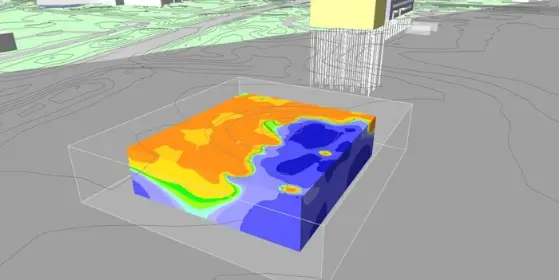Deepen core technology based on market strategy (2) —Offshore wind power generation support services—
In order to fulfill its international pledge to reduce greenhouse gas emissions by 46% by 2030 and achieve carbon neutrality by 2050, the Japanese government approved the Basic Policy for the Realization of GX by Cabinet decision in February 2023. The policy clearly states the aim to make renewable energy Japan’s main power source, including expanding the introduction of offshore wind power generation.
The market for offshore wind power generation is expected to expand further in the future.
In order to meet the needs of the rapidly expanding market, OYO Corporation is developing new seafloor ground survey technology by utilizing our strengths in geophysical survey technology and equipment development capabilities.
Offshore CPT-Vs NETIS Registration No.: KTK-210016-A
This survey technology is capable of efficiently acquiring information such as the following for seafloor ground: (1) strength of the ground, (2) judgment of liquefaction, (3) evaluation
of consolidation, and (4) shear wave velocity of the ground.
Wind turbines for offshore wind power generation must be designed with seismic resistance. The conventional survey
method (P-S Logging) for acquiring the seafloor ground data necessary for this seismic resistant design requires a large-scale survey vessel. This made the surveys very expensive and
limited the applicable depth. There were also other issues, such as the tendency of survey data to deteriorate in quality.
The new technology developed by OYO Corporation allows
work to be carried out on a compact work platform (self-elevating platform (SEP)) instead of a large survey vessel, so the survey method can be used even in shallow water. Since it is
possible to efficiently grasp the ground characteristics by utilizing vibrations generated by excavation work, etc., this technology is expected to significantly reduce costs, save
labor, and suppress the impact on the surrounding environment.
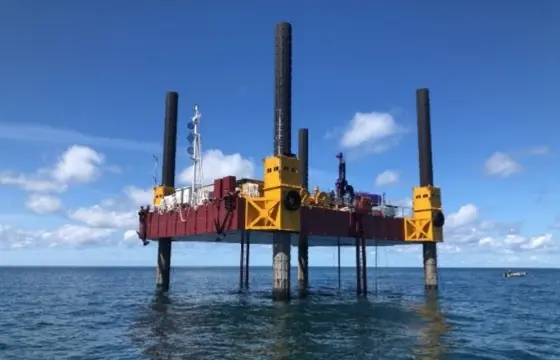
Scene of survey work
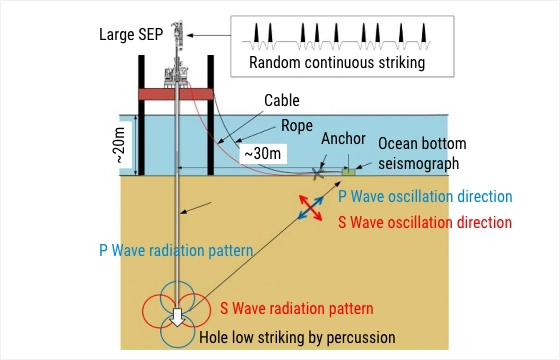
Marine CPT-Vs schematic diagram
Offshore microtremor array exploration technology
Offshore microtremor array exploration is a technology to analyze and obtain ground S wave velocity structure from the seismic bedrock using natural oscillation such as waves. This
technology does not require large fixed facilities such as SEPs and steel oar (marine scaffolding), and can be operated efficiently even on the sea in harsh weather conditions.
OYO Corporation is also developing other technology and bringing it to market. Examples include ultra-small offshore microtremor array exploration technology that ascertains the
structure of shallow ground up to a depth of approximately 20 meters, which is difficult to survey with ordinary seafloor microtremor array exploration, as well as a deep-water seafloor
microtremor array exploration device for deep-water in which floating offshore wind power generation facilities are used.
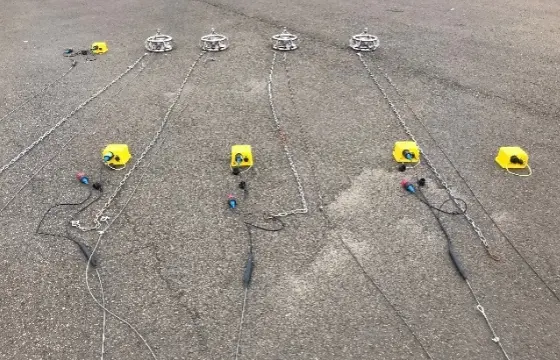
Offshore microtremor array exploration device
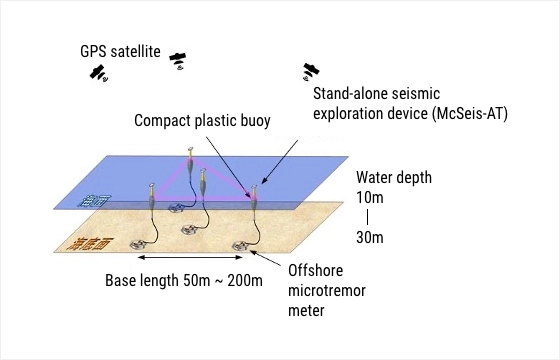
Offshore microtremor array exploration schematic diagram
Large-borehole diameter suspension P-S logging technology
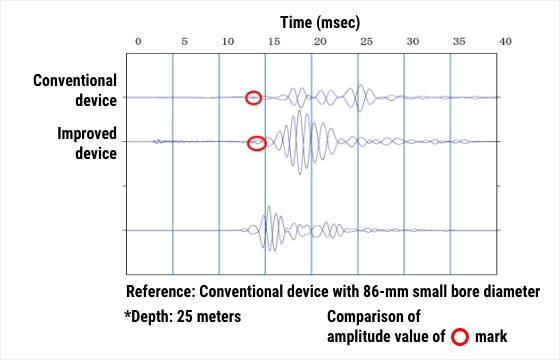
With the expansion of the offshore wind power generation market, there is a growing demand for seafloor survey technology that can efficiently survey wide sea areas at low cost.
CPT surveys using large drillships are common overseas. These surveys are superior to the boring surveys that have been conducted in Japan in terms of work efficiency and cost. On
the other hand, in P-S logging using a normal suspension P-S logging device, the S wave waveform was difficult to read and data quality deteriorated. This was due to the large
diameter of the boring hole.
Therefore, OYO Corporation developed a suspension P-S logging device (improved device) for large boreholes with greatly increased excitation energy, and developed technology to
obtain high data quality even in P-S logging using CPT survey holes.
